Marijuana News
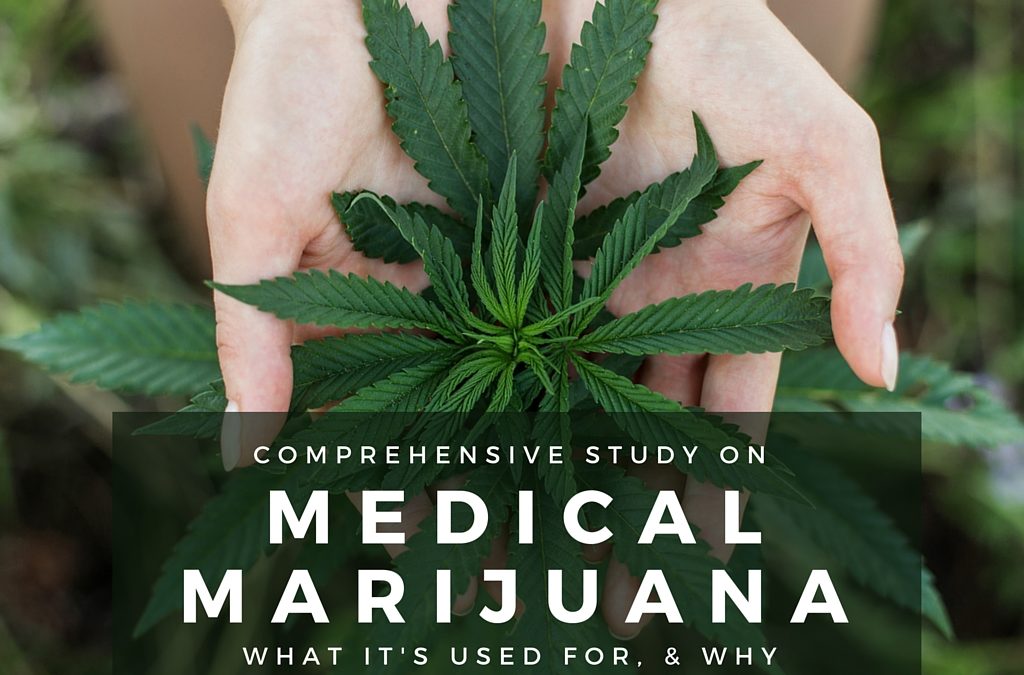
Review of What Medical Marijuana is Used For
Doctors are allowed to prescribe marijuana to their patients in 25 states now. Others still use marijuana for its medicinal effects. But due to the limited research on medical marijuana, many still wonder, and still don’t know what all medical cannabis can help them with.
This CBS clip might clear some of these things up for you. It covers research derived from one of the largest and most comprehensive reviews on medical marijuana. The researchers of this review looked at 79 studies, and 6,500 patients. Here’s what they found:
There was a moderate level of evidence to support the use of medical cannabis for chronic pain (specifically with neuropathy or cancer).
There was also evidence of marijuana helping patients with spasticity, typically associated with diseases such as multiple sclerosis.
They did however find that there was less evidence that marijuana could help: sleep disorders, anorexia, eating disorders, tourette syndrome, weight gain in HIV patients, and nausea in chemotherapy patients.
But this doesn’t necessarily mean that medical cannabis is not effective at treating these problems, it simply means there has not been enough evidence, or research to support these findings.
Side Effects:
Over 80% of the patients in these studies reported side effects. Most of these side effects were mild: dry mouth, dizziness, sleepiness and confusion.
But they say there is a concern for more serious effects, involving cognitive effects. This may include: increased levels of anxiety or psychosis, concerns for how it effects the developing brain in adolescents and teens etc. But in order to truly determine if these are are serious side effects to be concerned over, more research needs to be done.
What Medical Marijuana Is Prescribed For:
Epilepsy, HIV/AIDS, cancer, glaucoma, Crohn’s disease, PTSD
Medical Concern: Mislabeled Edibles:
Researchers looked at over 70 products and found that only 17% of these were accurately labeled! 23% were under-labeled and 60% were over-labeled. This may be a pretty big reason as to why so many people are “overdosing” on marijuana.
If medical marijuana were legalized across the United States, or even rescheduled, then it would be far easier to regulate things like this. Then we could also conduct more research, so doctors and their patients can be more comfortable and more informed.
But until then, for patients that are suffering, they are willing to try anything – especially something with mild side effects.

This Survey Determines What Happens to Teen Marijuana Use After Legalization
After legalization of marijuana in Colorado, concerns of teen cannabis use heightened. But a new government survey shows that there is nothing to worry about; teenage use of marijuana actually dropped slightly after Colorado legalized recreational marijuana for adults.
Other studies confirm this. The biannual poll of the Colorado Department of Public Health and Environment also shows that the percentage of high school students that use marijuana in Colorado is less than the national average.
Another study shows that teenagers are finding it harder to get marijuana.
Let’s Talk Numbers
21.2 percent of Coloradan high school students (surveyed in 2015) had used marijuana in the last 30 days.
This was down slightly from the 22 percent in 2011 – the year before voters approved statewide recreational cannabis use by adults 21 and older (the first state-licensed retail outlets for legalized pot actually opened in 2014).
The national rate of teenage pot use is slightly higher at 21.7 percent.
However, What Is Concerning
Data from a 2015 survey by the federal Department of Health and Human Services concludes that only 48 percent of the students polled viewed regular marijuana use as a risky behavior.
And although we have not done enough research on marijuana on teen use (due to a lack of funding and bureaucratic complications), it is highly likely that marijuana can have negative effects on teens.
However, Colorado is America’s experiment – can legal cannabis work? This is just another example of how it is working. As we continue to legalize and regulate, it may soon be no different that, say, alcohol.

Why Luxury Cannabis Is The Next Big Thing
There are suits, cars and secret agents. And then there is Armani, Bentley and James Bond. And we all know the latter examples are better.
In every industry, some brands rise to the top – they become the luxury brands. And we can only expect that this will happen in the cannabis industry as well.
In the past, smoking marijuana was just a thing that “stoners” did. And let’s face it – not everyone wants to be one. There are those that may have smoked in college, those that tried it a few times but don’t smoke it regularly, those that never smoked for fear of breaking the law, or those that simply did not want to have the attached stigma. But things are changing in the favor of these people. Marijuana is becoming legalized across the country, and also becoming socially acceptable. Because of these, there is more and more research being conducted and released about the potential benefits of using cannabis. There is also a tremendous amount of product innovation. Now there is a strain for just about everything.
This is where I was at. As a Colorado native, smoking marijuana always seemed sort of…normal. In high school, my parents openly stated that they would rather I smoked marijuana than cigarettes or drinking alcohol. Pretty much everyone I knew did it – especially in college. Pretty much everyone but me. Not because I didn’t give in to peer pressure, but because I just didn’t like being high. Although I liked the giddiness aspect of it, the other effects made it not worth it to me.
I didn’t like not being able to form a sentence, or feeling like my butt was super glued to the couch, or getting the urge to eat a hippo (but too lazy to get up and make food), and I didn’t like that I never knew how much would be too much. I went from not feeling a thing, to falling flat on my face and hating my life. I also really didn’t like hanging out with the “stoners” – I was a jock, so we didn’t really have much in common. Furthermore, I am a woman…and for some reason, I always had it in my head that women don’t (or shouldn’t) smoke weed because it’s tacky.
Another reason I didn’t like smoking? I didn’t exactly know how…I didn’t know when to cover the hole on the pipe with my finger, how long to leave the lighter on it, how much to suck in – I didn’t know anything about it. So I was always a little embarrassed.
But today, pretty much all of this has changed. It’s no longer just the stoners who use marijuana. It’s becoming legalized and normalized. There are so many new products and strains designed to fit the needs of anyone who wants cannabis. The strains that put you on the couch and cloud your head still exist, but there are also strains that make you energetic and feel uplifted; they can even improve your focus. And if you don’t like to smoke, that’s not a problem. You can eat your cannabis, or perhaps you would rather use a thin, sleek vape pen. There’s no smoke, no smell, no stigma, and you know exactly how much you’re getting. For all these reasons, more and more average Joes, mothers and professionals are using cannabis. And they have different expectations and different demands; there is no longer just the demand for strong or weak weed – there is a demand for sexy, designer cannabis.
High end, luxury cannabis will only continue opening the market to include people who like nice things and who want to try cannabis, including a healthy and employed middle class, and upper class.
For this reason, more and more “designer dispensaries” are opening in legal states. These dispensaries are not just shops, they are high design showrooms that sell museum-quality products. The brands must connect with the consumer and provide them with an experience, not merely a purchase.
The experience is unlike any other dispensary experience. The logo doesn’t have a marijuana leaf. It is instead, sleek and simple. It looks like any other luxury brand – so that if you were to carry the bag with you, no one would know you shopped in a dispensary. The packaging is deluxe and beautiful. The staff is friendly and dressed professionally, and they always have someone available to sit down and discuss your needs and expectations from the strain; what feelings do you want to get? Are you using cannabis to treat pain or anything else? What’s your desire? They will help you find the perfect product.
While there are a few luxury cannabis companies in Colorado that provide this luxury branding experience, it’s currently not enough to meet the demand of this growing market.

What Cannabis Strains Can Relieve My Pain?
Pain management is one of the most common applications of cannabis. It can help with inflammation, headaches, neuropathic pain, muscle soreness, fibromyalgia, spinal injuries and even cramps. Patients have seen varying degrees of success with cannabis in treating various pain-related ailments, depending on the type of pain, the intensity, and the individual’s own physiology.
For those of you willing to try an alternative to pain medication, we have pulled some recommendations for you on what strains are best for pain. Certain cannabinoids and terpenes often have areas of “specialization,” and some simply are better for pain than others. But as previously noted, every individual’s physiology and situation is unique; so we suggest trying a few to see which works best for you.
General Pain
Many say that the hybrid, ACDC is one of the most effective at killing your pain. It has high amounts of both THC and CBD, making it a great pain medicine. It is also commonly used by chemotherapy patients. The “mood” effects: very relaxed, pretty darn focused, uplifted and happy.
The Indica, Blackberry Kush is one of the best high-THC strains for pain. Because high CBD strains are still hard to access for many, this is a great alternative. The “mood” effects: (warning!) this strain will make you lazy and sleepy, but also very euphoric, happy, and even creative.
Inflammation and Arthritis
Usually people don’t look to sativa strains for treating pain and inflammation. But, Harlequin is an exception to that rule. It is a high CBD strain that keeps you clearheaded and light – so, it’s great for daytime medication. The “mood” effects: extremely happy and euphoric, very focused and a little burst of energy.
One of the most talked about strains in the realm of inflammation is Blue Widow. This hybrid is praised for its anti-inflammatory qualities because of its rich terpene (and caryophyllene) profile. In higher doses, it can be used to help get you to sleep. The “mood” effects: uplifting and also calming, drowsy and sleepy.
Migraines and Headaches
Purple Arrow hits the target somewhere between heavy pain relief and uplifting euphoria, making it a great choice for headache sufferers needing swift relief without the couchlock effects typical of indica varieties. This is a great hybrid strain for severe pain. Plus, it tastes as good as it feels! The “mood” effects: potent, but no over-medicated feeling, euphoria and happiness, a bit giggly.
All of the Headband hybrids are commonly described as “cerebral,” with effects that go straight to the crown of your head. The Blueberry Headband is the perfect name, as it gives you a cerebral rush, relaxed body and tastes like blueberries! The “mood” effects: happy and talkative, euphoric, but also relaxing.
Spinal Injury Pain
One of the earliest indicas of Afghanistan, Mazar I Sharif has a reputation as a relentless painkiller. It is known for its high cannabinoid contents, making it great for severe pain and potent relaxation. But beware! Overindulgence can lead to a mind-warping, narcotic effect. The “mood” effects: while leaving you lazy, you’ll also experience euphoria and hunger.
Warning! Cataract Kush is not the hybrid for the novice consumer; however, it is perfect for patients that need a strain that can expertly annihilate pain associated with spinal injuries. This is by far the best option for spinal injury pain, but it can be potent – especially because it is a “creeper,” so the high keeps on building long after you stop consuming. The “mood” effects: extremely lazy, hungry, happy and a bit sleepy – it will make you beg to shut your eyes.
Cramps
As more and more women are starting to consume cannabis, finding cramp pain relief is becoming more and more important. The indica, Redwood Kush will give you tingling body effects and ease your cramps. However, this strain is best consumed during a lazy day you are planning on spending on the couch. The “mood” effects: happy and blissful, uplifted and creative, but a bit spacey.
Dynamite is another indica that blows pain and cramping out of the water. It is a high-quality and high-THC strain that smells like grapefruit. However, it may cause an over-indulgence of food. The “mood” effects: euphoric and uplifted, hungry, tired and lazy.
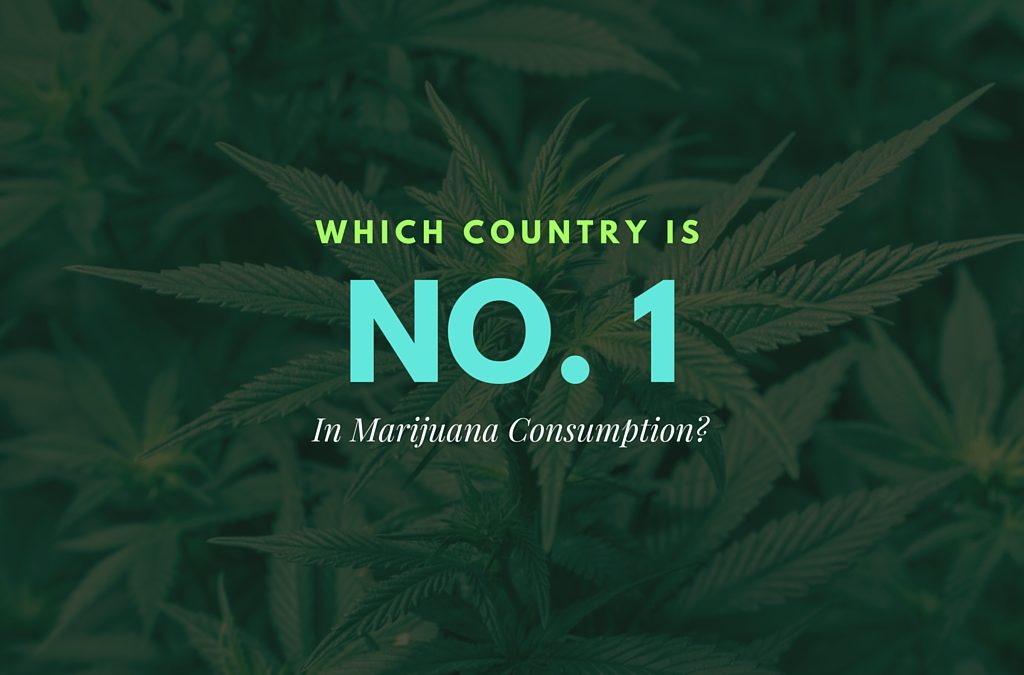
Is Iceland Really The No. 1 Consumer of Cannabis?
According to UN figures, Icelanders consumer the most cannabis (as a percentage of population). But if we actually take a look at the numbers…this really doesn’t mean much. In fact, Iceland probably isn’t the number one consumer.
In 2012, more than 18% of the Icelandic population consumed marijuana throughout the year. And yes, this is higher than the 2013 United States report of 15.4%. However, we should note that the UN figures are mostly self-reported and the data was collected over a number of years.
Back when this data was released, this was the talk of the town (er, of the world). Iceland was labeled the #1 country for marijuana use. Obviously, Iceland was not too pleased about this, and they refuted. They said that the data was incomplete and only measured a small portion of their entire national population.
They may be right, and they may be wrong. But, even if this was the case, this data may not mean all that much. If you paid attention to the wording of the findings, you’ll notice that the percentages were based on the number of people that consumed throughout the entire year! Yes, this includes your mom that smoked for the first time on her birthday last year. So experts are saying that they overlooked the most significant figure: the percentage of citizens that use cannabis on a regular basis.
Let us not forget that the bulk of consumption lies in the people who use cannabis on a daily or near daily basis. According to Jonathan Caulkins, a professor at Carnegie Mellon University, ” A little over half of cannabis use in the U.S. is consumed by people who spend more than half of their waking hours under the influence.”
So, for a better result, we should measure the percentage of users within a shorter period of time.
Although there is not very much data on daily marijuana use in Iceland, based on what we do not, it’s not likely that it would take the No. 1 title if we did have better data.
Here are some stats (with pretty good data) and facts on marijuana consumption in the U.S.

Is Marijuana Becoming Normalized?
Normalization is when something that was once considered deviant behavior becomes socially acceptable. When we take this definition and apply it to an illicit drug, we typically look for these indicators, originally proposed professor Howard Parker:
- Increasing availability of the drug (and revenue in the United States)
- Increasing use of a drug
- More tolerant attitudes toward users
- Presentation of drug cultures in TV, film and music
- More liberal policy shifts
Now, let’s apply these indicators to marijuana in the United States.
Increasing Availability
Over the past 20 years or so, over a dozen states have passed legislation that decriminalizes possession of marijuana. A couple dozen states have passed cannabis legislation that provides for medical use, and several have even legalized recreational use of cannabis.
A 2015 study reports that legal cannabis is the fastest growing industry in the United States. The cannabis market grew 74 percent from 2013 to 2014 to a $2.7 billion industry, with an estimated 32 percent growth in 2015.
Now, patients who use marijuana to treat pain, physical or mental illness now have access to a medication that was not legal or feasible 20 years ago. Today, even non-medical patients can reap the benefits of the medicinal affects of marijuana.
Increasing Use, and More Tolerant Attitudes
This indicator is very apparent in US society; cannabis is the most commonly used illicit drug in America. Its use has increased from 14.5 million Americans aged 12 and older in 2007 to 19.8 million Americans in 2013.
Acceptance is also sky-rocketing. More and more Americans are supporting the legalization of cannabis. In fact, the majority of the population now supports the legalization of marijuana. Today, 53% support legalization, while only 12% supported legalization back in 1969. And whether they agree with legalization or not, a great majority believe legalization is inevitable; a study found that 75% of the public believe marijuana will be legal nationwide.
Presentation in TV, Film and Music
Cannabis has been presented in movies and television for decades, but the focus has changed from the melodramatic propaganda films like, “Reefer Madness,” to social acceptance in movies such as “Stepmom,” in which a dying character uses marijuana to ease her cancer pain – but smoking is not central to the plot. A recent television situation comedy, “Modern Family,” introduced new neighbors as the owners of a medical marijuana dispensary with no more fanfare than if they owned any other retail store.
But it’s not just film, it’s music too. Billboard, which tracks and reviews music, lists the top 20 cannabis-related songs, and they are not all by Bob Marley; songs range from rock and roll, to country, to jazz, to hip hop, with only one thing in common. They mention marijuana. There is no longer one artist, or one genre of music that talks about marijuana; it has become a part of all genres.
More Liberal Policy Shifts
Despite the growing body of evidence to the contrary, cannabis remains listed as a Schedule 1 drug by the DEA – meaning it has “no currently accepted medical use and a high potential for abuse.” Despite federal legislation making it illegal to grow, sell or possess cannabis, 27 states have passed laws either decriminalizing cannabis or allowing for some use. There are also many more states looking to expand current or pass new legislation in regards to cannabis this year. We are seeing legalization-oriented bills passing left and right. Every day it seems, there is new news regarding the legalization of marijuana.
The Cannabis Culture
Here is an indicator that we added to Parker’s. The fact that cannabis is now becoming integrated into cultural events is huge. There are community events that welcome cannabis use, such as this yoga and meditation event. There are even “holidays” oriented around cannabis use, like 4/20. Another example is cannabis themed weddings where couples are setting aside reception areas for smoking cannabis, similar to tobacco smoking or alcohol. Some offer a catered “weed bar,” where guests can partake of different varieties of cannabis or methods of cannabis delivery.
Colorado has also introduced cannabis into the tourism industry. Similar to a wine-tasting crawl, vacationers can sign up for tours that feature limo bus rides to cannabis-growing facilities, dispensaries and hotel accommodations. Some tourist packages offer discounts on purchases, as well as rides to and from the airport.
Lastly, for the tech savvy, a wide variety of cannabis-related apps are now available, including on Apple, which had banned such apps prior to 2015. According to Appcrawlr, a third-party app search program, more than 50 cannabis-related apps are available; these apps include dating opportunities, social media sites, information about specific types of cannabis and more.
So, all of these indicators suggest that, yes, cannabis is indeed becoming normalized, and socially acceptable. We may not be there yet, but we are certainly heading in that direction.
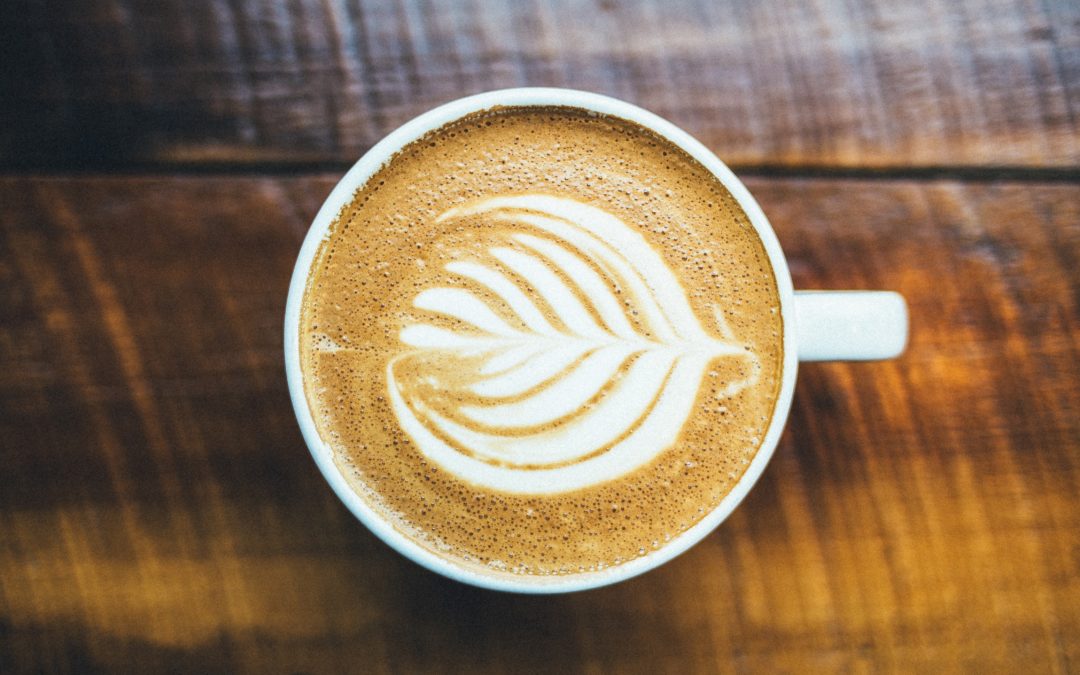
The Latest Obsession in Cannabis: Coffee.
It’s 6 am, what’s your go-to? Coffee of course. But if you want to add a little “spice” to your brew, then you’ll love cannabis infused coffee. Now the world can use marijuana to help them sleep, but also to stay awake!
Many people are developing somewhat of an obsession over this stuff (but it’s not hard to understand why). One of those people, Corinne Tobias created an entire cookbook revolving around the dynamic duo: coffee and cannabis. The cookbook, Wake & Bake: a cookbook, a colorful, healthy and playful guide to cooking with cannabis features a variety of cannabis coffee products. These include: six versions of coffee creamers, cannabis honey tincture infused coffee, an iced canna-coffee shake, and even a cannabis infused coffee cake.
And because she is focused on her health, and her readers’ health, she suggest using a low-acid coffee that is paleo, vegan and “friendly” to your digestive system.
Here are her instructions for a cold-brew:
- In a large ceramic bowl or 1/2 gallon mason jar, mix: 4 Cups Room Temperature Water 2 Cups Coursly Ground Organic Coffee
- Let the coffee mixture sit for at least 12 hours. I like it best after 24 hours, but if you’re impatient, you can pour a little off after 12 and let the rest chill for longer.
- Strain the coffee through a filter or a mesh strainer. Store the concentrate in the refrigerator.
But if you’re interested in using Bulletproof coffee, you can try that too! Bulletproof coffee is traditionally made with butter, so she says if you have some cannabutter on hand, you can use that too. But, she prefers using cannabis infused coconut oil.
Here are her instructions for a Bulletproof brew:
- In a blender, combine:
- 1-2 Tablespoons Cold Brew Concentrate (more or less to taste)
- 3/4-1 Cup of Boiling Water
- 1 teaspoon – 1 Tablespoon Cannabis Infused Coconut Oil
- 2-3 Tablespoons Coconut Milk
- Sweeten to taste with organic stevia or local honey and serve immediately.
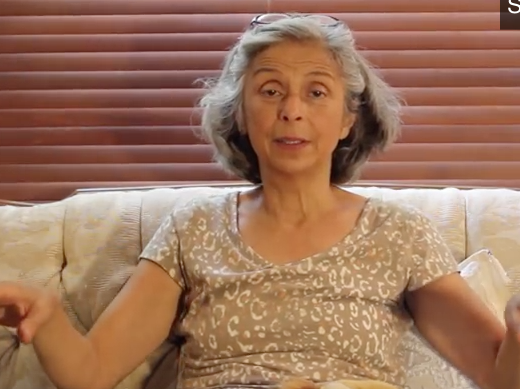
Mother Smoking Marijuana For the First Time
A mom is afraid to try cannabis and thinking she might not be interested. Peek at this Marijuana Video.

This is Why Employers Can Still Fire You if You Smoke Marijuana in a Legal State, Even if It’s Medical
Politicians and reporters today may claim that marijuana is legal in Colorado and other states, but in some senses, it’s still not. While you will not get thrown into jail for smoking a joint in those states, there’s no addendum to the law that says employers can’t decide to administer their own drug tests.
Unfortunately, too many people think that since pot is legal, smoking pot will come without consequences. If you believe that, take a look at Amendment 64, the provision which legalized pot in Colorado. If you read the entire thing, you will notice that the amendment states:
“Nothing in this section is intended to require an employer to permit or accommodate the use, consumption, possession, transfer, display, transportation, sale or growing of marijuana in the workplace or to affect the ability of employers to have policies restricting the use of marijuana by employees.”
And it is not just Colorado that has such a section. DC’s Initiative 71, which legalized the ownership of marijuana in the city, also permits employers to fire employees for using marijuana, even if it’s outside the workplace.
To some degree, that is not totally unreasonable.
But what about medical marijuana? If a doctor approved the use of marijuana, as is the case in 24 states, then employers would have no grounds to fire their workers, correct?
Unfortunately, that is not the case, as the Brandon Coats ruling proves. Coats is a quadriplegic who used marijuana when he was not working at his job as a Dish customer sales representative, in order to control pain and leg spasms. He was fired from Dish for failing a random drug test, and he sued claiming that using medical marijuana was legal under state law.
But last year, the Colorado Supreme Court ruled against Coats, affirming that businesses can fire employees even for off-duty medical marijuana use; and given that the ruling was 6-0, it is unlikely that this ruling will be overturned anytime soon.
From a legal perspective, it is somewhat understandable. Employers do have wide latitude on their reasons for firing employees, and they often conduct background checks to see if you have any kind of record. But it is incredibly frustrating that while no one tests to see if an employee drinks or smokes cigarettes when off hour, an innocent act like smoking marijuana can still see punishment; just not in the form of a jail cell.
So, if you regularly smoke marijuana, what can you do to ensure that your employee rights are respected and that you are allowed to smoke without losing your job?
The first step is to be upfront about your marijuana usage. You may think that hiding it may be the best route toward keeping or getting that job, but it is comparable to lying in your resume. If your employer finds out that you have been hiding it, you can end up in more trouble than than you would if you had been upfront about your habits. Consequently, whether you decide to smoke marijuana while employed or have a habit of smoking it while undergoing a job interview, you have to be upfront about your habits and understand that it may slow down your job search.
The second step is to understand what employment protections are in place for marijuana consumers. If you do it for fun, you are typically out of luck. And in most states where you can use medical marijuana, you will be out of luck, as the Coats case shows.
But in Arizona, Connecticut, Rhode Island, Maine and Delaware, employees do have some protection. For example, Connecticut does not allow employers to fire or threaten employees solely because of their medical marijuana use, “unless required by federal law or to obtain federal funding.” And while you may think that caveat makes the entire section worthless, you have to remember that while marijuana is federally prohibited, there is no federal rule stating that employers must fire employees who smoke marijuana.
But remember: These laws do NOT state that employees have the right to smoke marijuana at work, and those who work with heavy machinery are an exception to these protections.
When marijuana is eventually legalized throughout the United States, you will undoubtedly have self-satisfied media types who declare that the fight for marijuana is over. But… that is far from the case. Those who wish to smoke pot will undoubtedly face reprisals from employers who are still convinced that cannabis is dangerous.
Until such policies change, those who smoke pot have to understand that they can lose their job for their recreational activities, and there is little that can be done about it at this point.
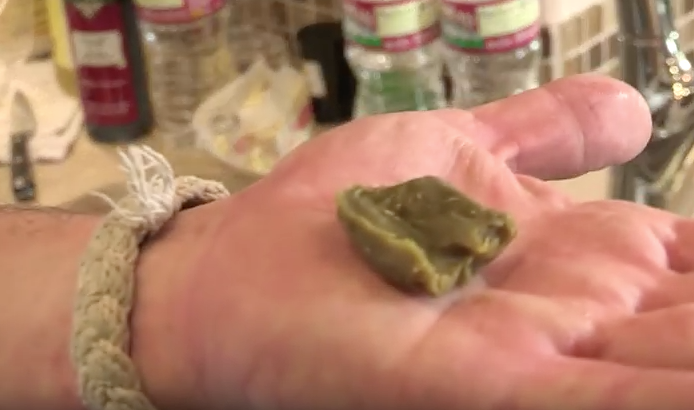
Marijuana Smoking Mothers In California
Here are some mothers in Beverly Hills, California smoking marijuana and not ashamed of it. Consuming cannabis is a great solution for those who don’t want to smoke it or those who want to use it for medical use. Or perhaps you just want to make some weed brownies and get baked with your friends this weekend! Whatever the reason, we explain exactly what you need to know to start cooking with cannabis.
When cooking with cannabis most recipes call for a certain amount of cannabutter or canna oil, which is used in place of standard butter or oil.

Recent Comments